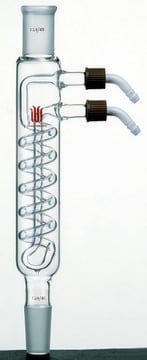GF02562320
Tin
foil, 50x50mm, thickness 0.15mm, as rolled, 99.99+%
Sinonimo/i:
Tin, SN000360
Autenticatiper visualizzare i prezzi riservati alla tua organizzazione & contrattuali
About This Item
Formula empirica (notazione di Hill):
Sn
Numero CAS:
Peso molecolare:
118.71
Numero MDL:
Codice UNSPSC:
12141745
ID PubChem:
NACRES:
NA.23
Prodotti consigliati
Saggio
99.99%
Forma fisica
foil
Produttore/marchio commerciale
Goodfellow 025-623-20
Resistività
11 μΩ-cm, 20°C
Lungh. × largh. × spess.
50 mm × 50 mm × 0.15 mm
P. eboll.
2270 °C (lit.)
Punto di fusione
231.9 °C (lit.)
Densità
7.310 g/mL at 25 °C (lit.)
Stringa SMILE
[Sn]
InChI
1S/Sn
ATJFFYVFTNAWJD-UHFFFAOYSA-N
Descrizione generale
For updated SDS information please visit www.goodfellow.com.
Note legali
Product of Goodfellow
Certificati d'analisi (COA)
Cerca il Certificati d'analisi (COA) digitando il numero di lotto/batch corrispondente. I numeri di lotto o di batch sono stampati sull'etichetta dei prodotti dopo la parola ‘Lotto’ o ‘Batch’.
Possiedi già questo prodotto?
I documenti relativi ai prodotti acquistati recentemente sono disponibili nell’Archivio dei documenti.
Mercury contamination removed with tin foil.
R Grajower et al.
Operative dentistry, 9(3), 101-104 (1984-01-01)
Lis Danielsen et al.
Forensic science international, 134(2-3), 134-141 (2003-07-10)
Previously, electrical injuries have been suggested caused only by the concomitant heat developed during the passage of an electrical current. Recent experimental studies on fully anesthetized pigs and the study of one human case have, however, shown typical electrical alterations.
Britta A Jung et al.
Clinical oral implants research, 22(6), 664-668 (2010-11-04)
To evaluate the necessity of three-dimensional imaging (computed tomography [CT]/cone-beam computed tomography [CBCT]) for paramedian insertion of palatal implants. Lateral radiographs and CBCT scans were performed from 18 human skulls. For lateral cephalometry, the nasal floor (right/left) and the oral
Gabriel Santpere et al.
Genome biology and evolution, 7(6), 1490-1505 (2015-05-16)
We set out to investigate potential differences and similarities between the selective forces acting upon the coding and noncoding regions of five different sets of genes defined according to functional and evolutionary criteria: 1) two reference gene sets presenting accelerated
M R Krigman et al.
Neurotoxicology, 5(2), 129-139 (1984-01-01)
The toxicology of tin is almost entirely the toxicology of the organic compounds of tin, for the metal itself and its inorganic compounds appear to be nearly harmless for practical purposes. Furthermore, the neurotoxicity of organotin is essentially that of
Il team dei nostri ricercatori vanta grande esperienza in tutte le aree della ricerca quali Life Science, scienza dei materiali, sintesi chimica, cromatografia, discipline analitiche, ecc..
Contatta l'Assistenza Tecnica.




